Winnipeg Railway Museum
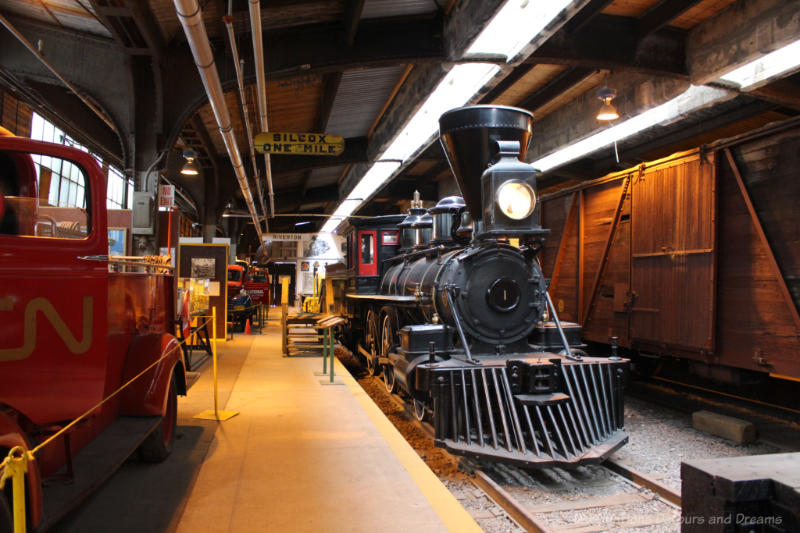
A museum in Winnipeg, Manitoba, Canada showcases railway history
(Last updated May 2023)
Note: The Winnipeg Railway Museum is currently closed while issues with the historical building it is housed in are being addressed to bring it up to code. The museum expects to reopen in late 2024 or early 2025. In the meantime, the museum has created this virtual walk through it.
The Winnipeg Railway Museum in Winnipeg, Manitoba, Canada contains locomotives (steam, diesel, and electric), railway cars, rail maintenance equipment, and delivery trucks. There are displays of railway memorabilia. Old photographs, newspaper articles, advertisements, and details of railway history line the walls. Given the important role the railway played in Winnipeg’s history, it seems fitting there is a railway museum in the city.
The railway played a pivotal role in the creation of Canada. Its most western province, British Columbia, agreed to join Confederation after being promised a transcontinental railroad within 10 years. In 1880, the Canadian Pacific Railway (CPR) received the contract and in November 1885 the “last spike” was laid in British Columbia connecting Canada coast-to-coast.
As the railway began pushing west, the growing city of Winnipeg became a hub for immigrants seeking to settle in Canada’s west and for the distribution of goods to the west. Winnipeg was known as the “Gateway to the West.”
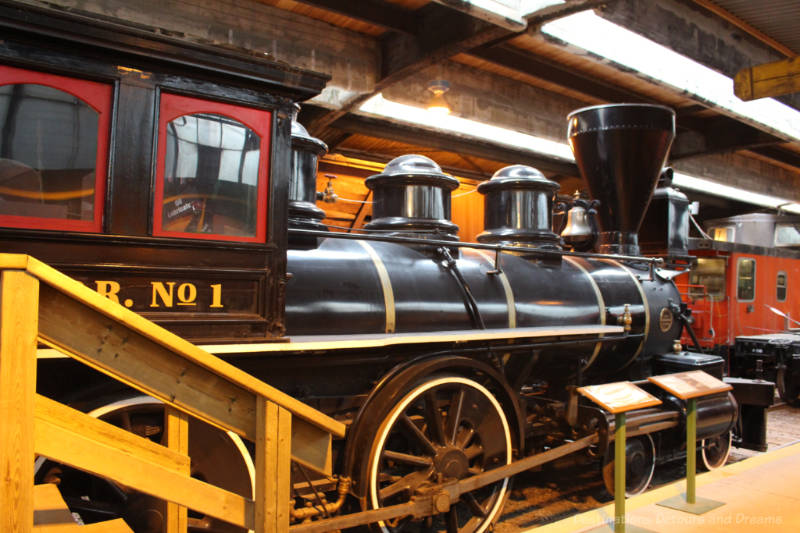
The first locomotive in Western Canada is on display at the museum. The Countess of Dufferin was a wood-burning locomotive built in Philadelphia in 1872. Named for the wife of the first Governor General of Canada, it served in western Canada from 1877 to 1907. It was restored in the 1970s at CPR’s Weston Shops in Winnipeg and now sits in the museum.
Winnipeg’s role as a gateway to the West declined after World War I due to a variety of factors, including a depressed economy, fewer immigrants, and the opening of the Pan Am Canal, but the railways remained important to Winnipeg’s economy employing thousands of railway workers in yards and shops.
Prior to the creation of the CPR, there had been other railway companies servicing parts of what is now Canada. Another railway expansion began in the early 1900s with numerous branches sprouting in the West after an immigration boom. One of the companies was the Canadian Northern Railway which grew by leasing and absorbing other lines. It wound up with links from British Columbia to its terminus in Montreal and also operated mileage in eastern Quebec and the Maritimes. Another company, The Grand Trunk company also offered transcontinental service.
By the end of World War I, the railways were heavily in debt. A 1917 royal commission recommended all railways except for the CPR and American lines be brought into one system owned by the people of Canada. The Canadian National Railways (CNR) was incorporated in 1917. Between 1917 and 1923, five railways became part of the CNR: the Grand Trunk and its subsidiary the Grand Trunk Pacific, the Intercolonial, the Canadian Northern, and the National Transcontinental. The CPR and CNR continued to be the two major railway companies in Canada for decades, in spite of challenges from other forms of transport. The CNR became the Canadian National/Canadien National (CN) in 1960 and was privatized in 1995.
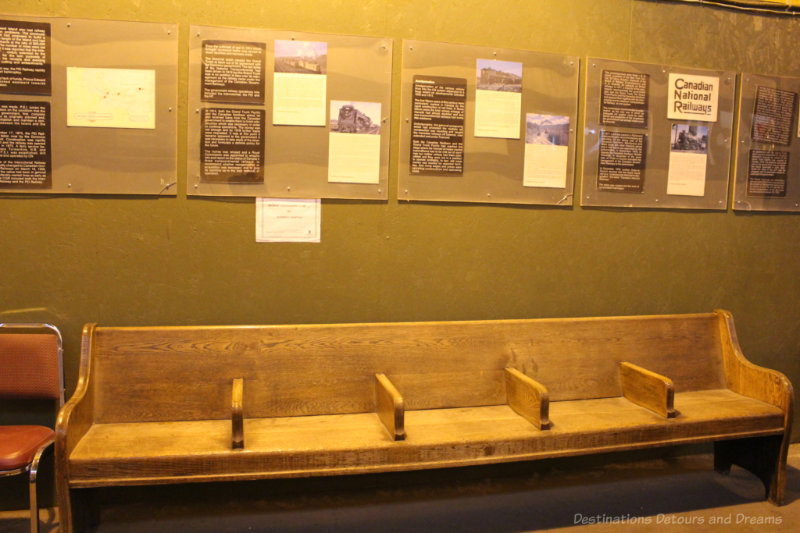
Passenger traffic declined significantly over the years and the Canadian government provided subsidies to the railways from 1967 to 1977. In 1977 VIA Rail was created for passenger traffic. It became a Crown Corporation in 1978.
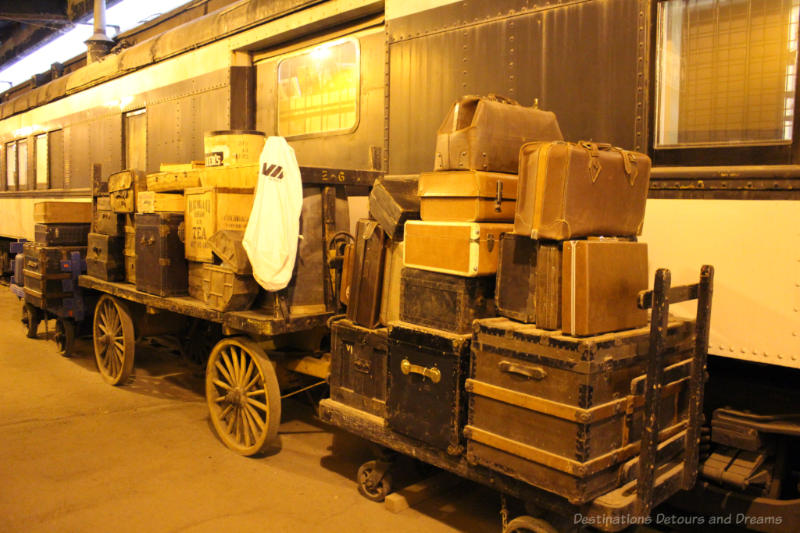
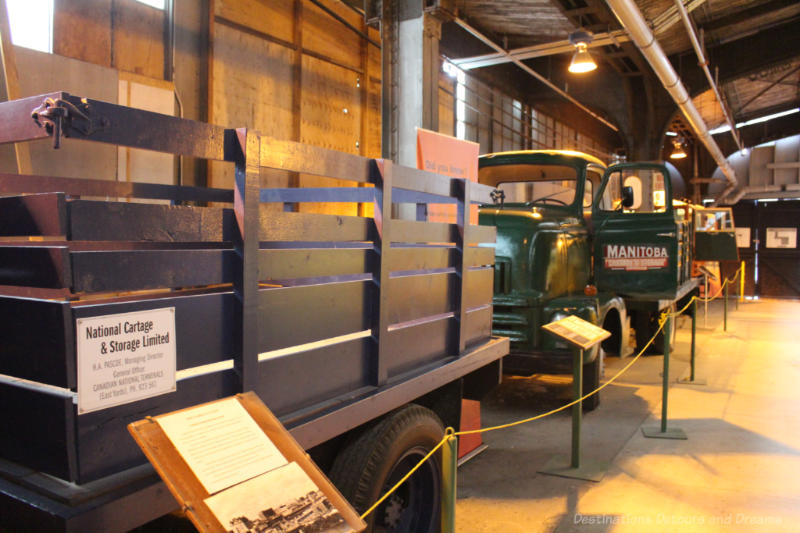
In addition to locomotives and train cars on display, there are maintenance equipment, switching equipment, and delivery trucks.
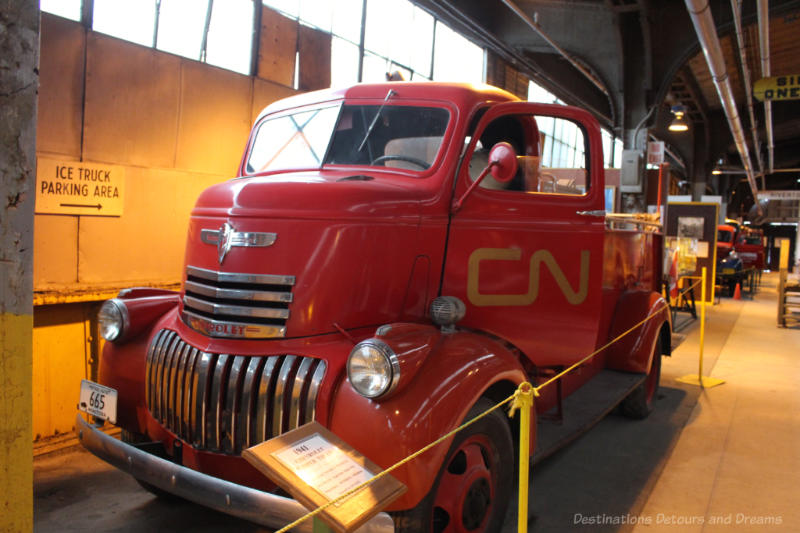
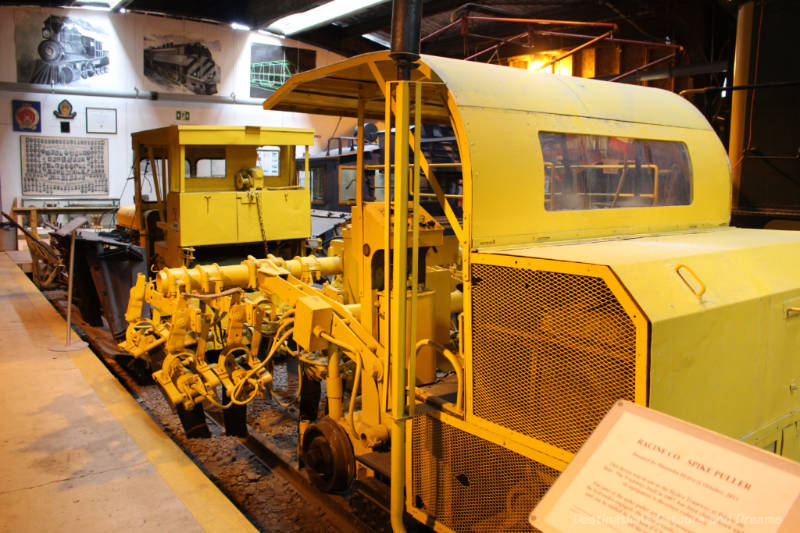 Spike Puller
Spike Puller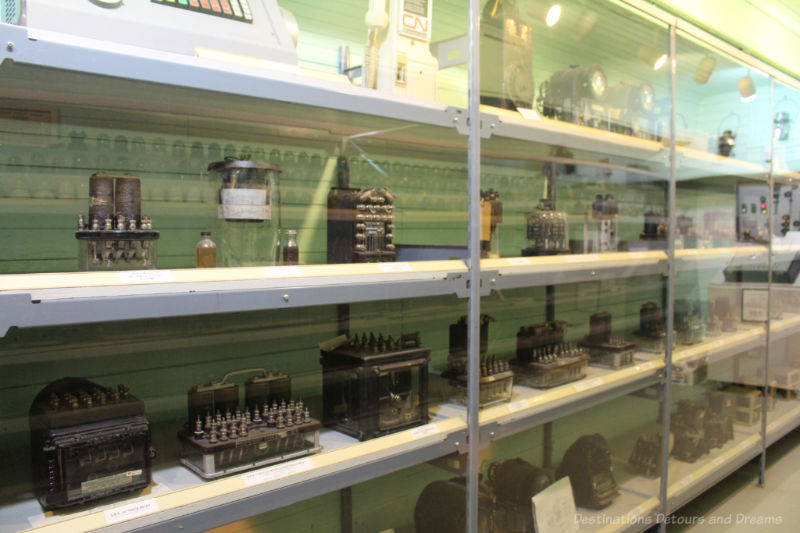
You’ll find displays about engine components and communication devices as well as assorted memorabilia used in train service.
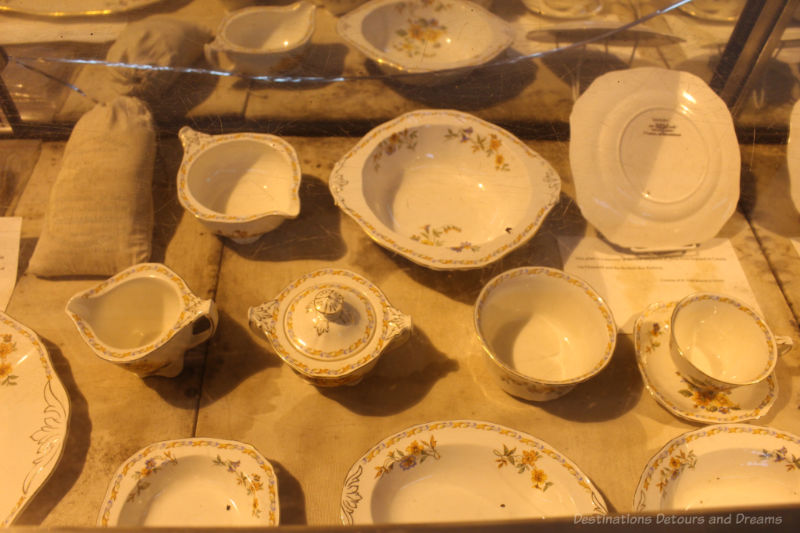 Churchill china pattern
Churchill china pattern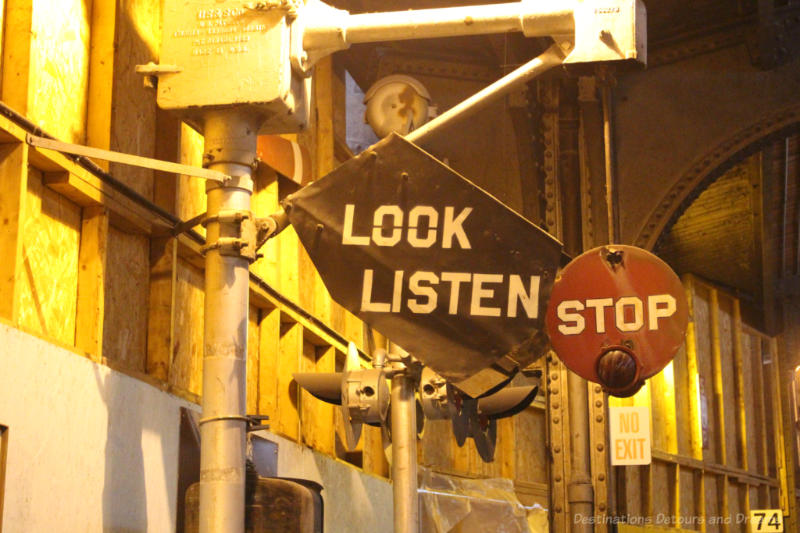
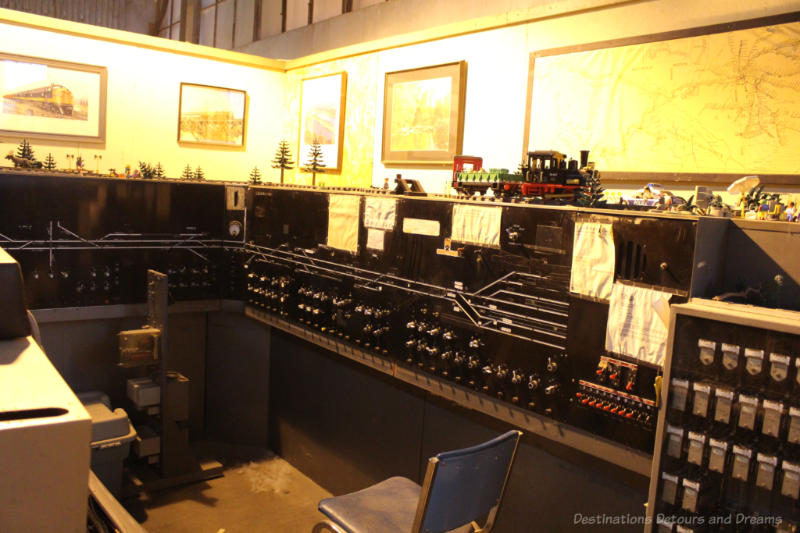
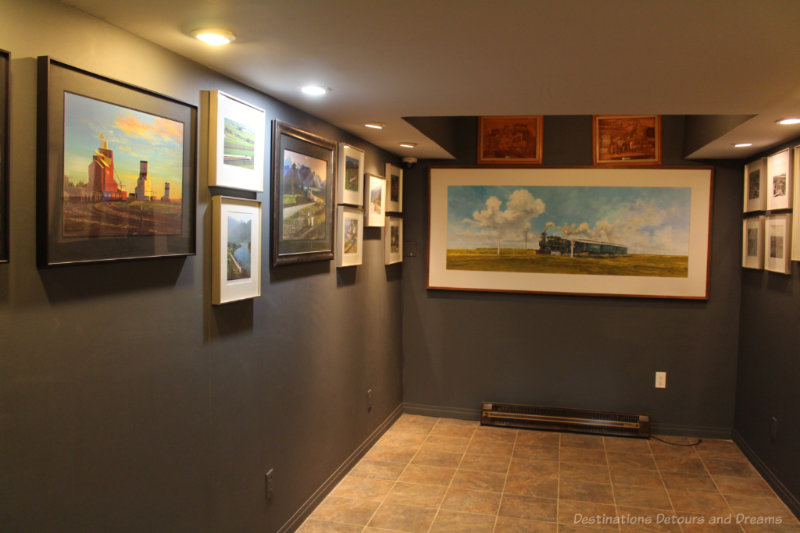
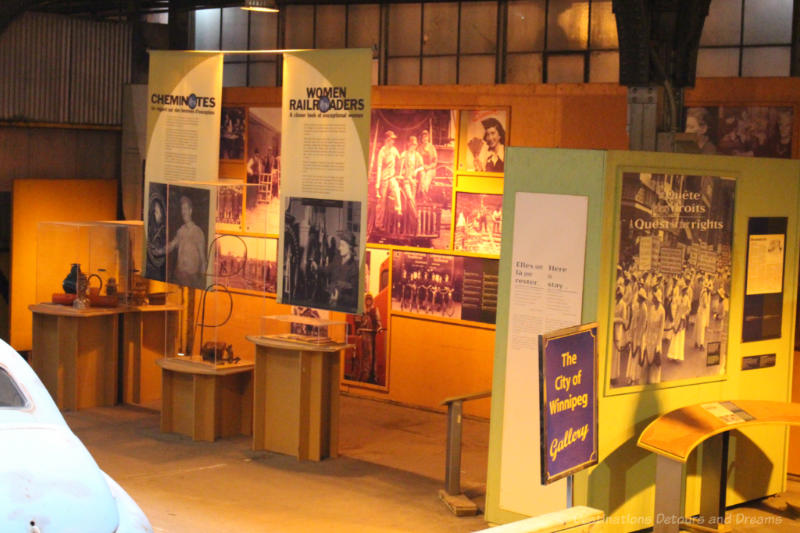
I found a display about women railroaders particularly interesting. Railway history may be male-dominated, but women have also shaped the history of railways since the mid-nineteenth century. They serviced passengers, operated telegraphs, and performed non-traditional manual labour. The display highlights their struggle for equality and jobs. Although the display focuses on the railway, old signage and information about changing roles over time reflect attitudes and changes within general society.
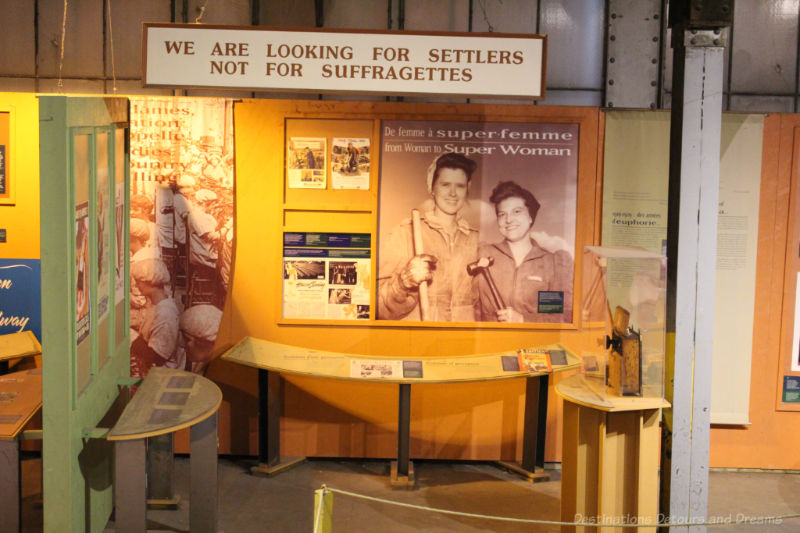
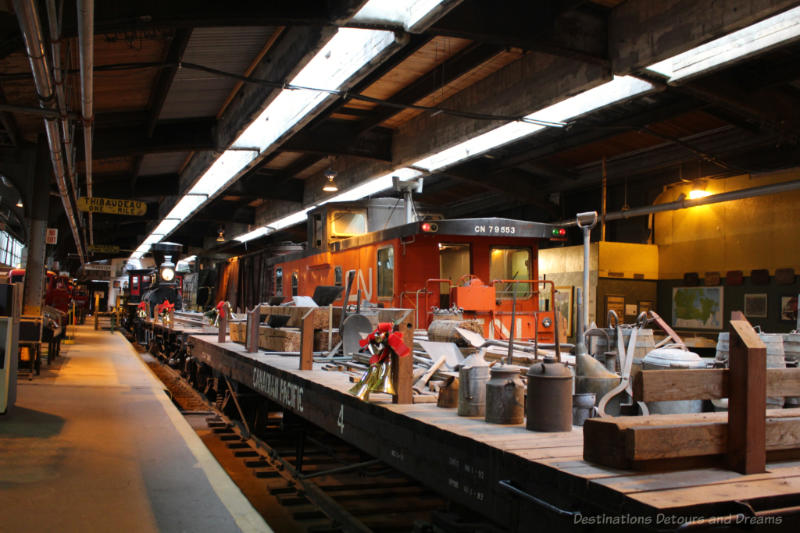
Although only a small percentage of passenger travel across Canada today is done by rail, both CPR and CN remain important carriers of bulk commodities and finished goods in North America, which is no surprise to anyone who has waited for what seems like an eternity at a railway crossing for a long train to pass. Rail is a cost-effective option for transporting goods across long distances.
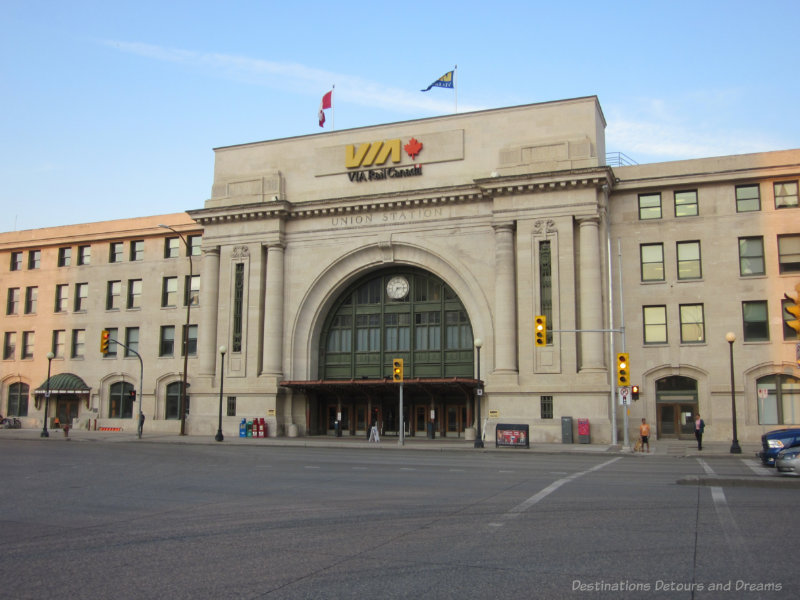
The Winnipeg Railway Museum is operated by volunteers of the Midwestern Rail Association Inc. It is located in Union Station on Main Street. The Beaux-Arts-style railway terminal was constructed between 1908 and 1911 and was designed by Warren and Wetmore, the architects of New York’s Grand Central Terminal. It became the regional hub of the Canadian National Railway. Now a National Historic Site, Union Stations houses Winnipeg’s VIA Rail station and a number of offices.
The museum is located on tracks 1 and 2 in VIA Rail’s station. A stairway at the west end of the VIA Rail lounge takes you up to the Railway Museum. (The museum is not wheelchair accessible.) Locomotives and rail cars sit on the tracks and various other displays are located on either side of the tracks.
Plan to spend about an hour in the museum. Train enthusiasts will want to allow more time. Guided tours (running about one-and-a-half hours) are available, but need to be booked a couple of weeks in advance.
The museum is open year-round. Hours vary by season so check the website or call the museum. Be aware that the museum is built around railway tracks. Although it is walled in and roofed, it is not completely sealed and it will be cold in the winter. Leave your parka and gloves on.
Never miss a story. Sign up for Destinations Detours and Dreams free monthly e-newsletter and receive behind-the-scenes information and sneak peeks ahead.
PIN IT
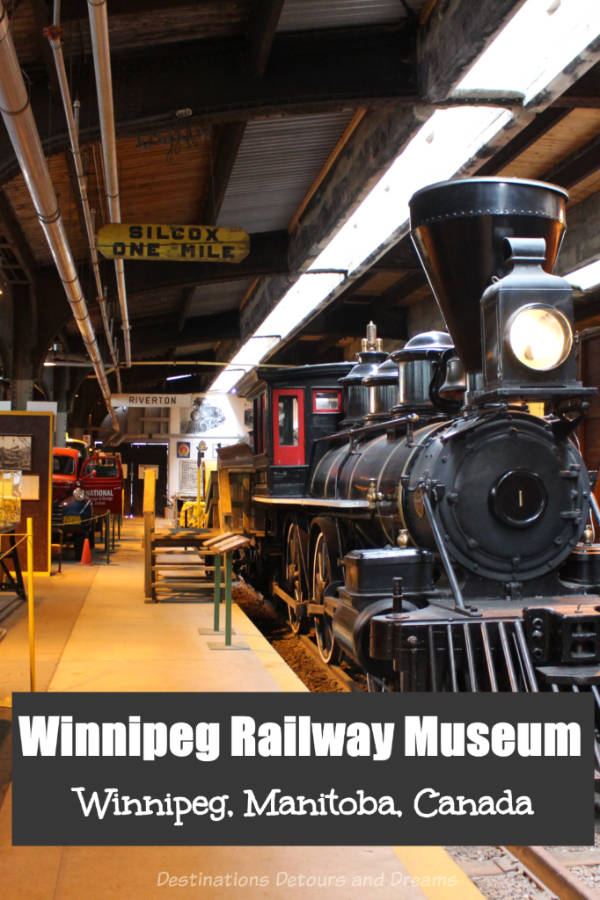

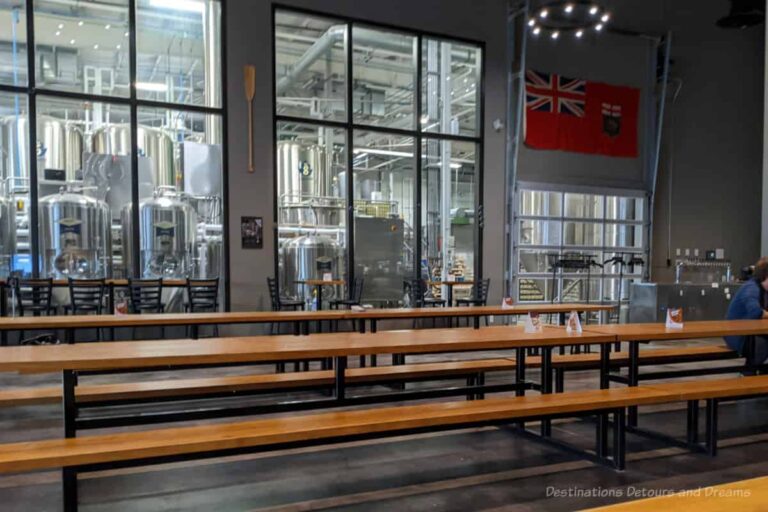
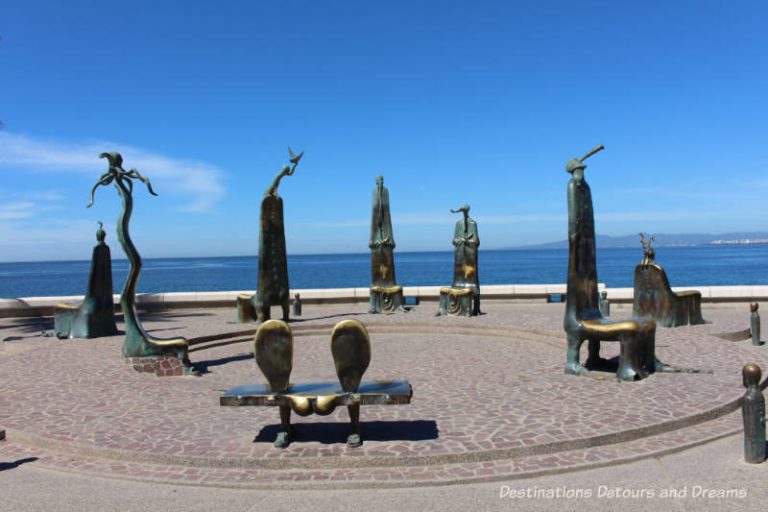

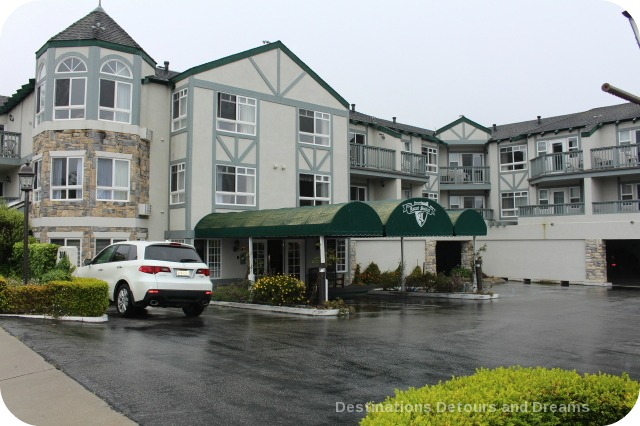


Looks fascinating. Love the old locomotives.